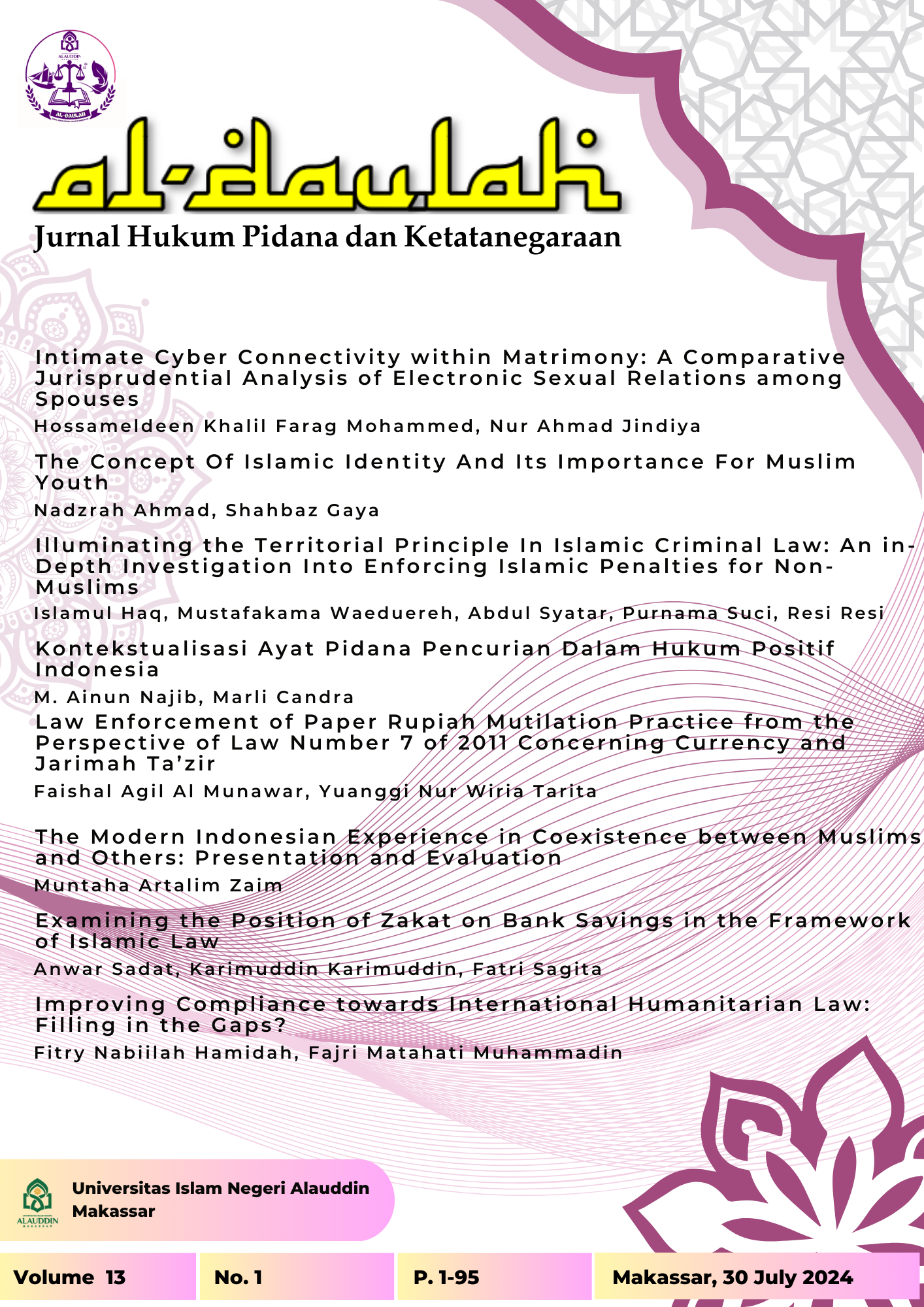Penalaran Wacana Argumentatif Mahasiswa Perbandingan Madzhab dan Hukum (Pmh)
Abstract
This study aims to find patterns and techniques of reasoning in students’ argumentative written discourse in an effort to cultivate critical thinking among the students majoring in Comparative Schools of Islamic Jurisprudence and Law (PMH) State Islamic University of Alauddin Makassar. To achieve these objectives, the approach used in this study was a qualitative approach with a theoretical orientation discourse analysis. The research data were the written discourse obtained from the assignment of students to write argumenttative discourse. Data were analyzed using three basic steps, namely data reduction, data presentation, and drawing conclusions. The results indicate that the students’ patterns of reasoning in argumentative written discourse in their effort to cultivate critical thinking among students can be grouped into four patterns, namely: (1) pattern CGB, (2) pattern CGWB, (3) pattern CGB-MQ, and (4) pattern CGWB-MQ. In addition, the students’ reasoning techniques in writing argumentative discourse include: (1) the argument with examples, (2) the argument with the authority, and (3) the argument with causes.
References
Achmad, A. 2007. Memahami Berpikir Kritis. Bandung. On line at http://re- searchengines.com/1007ariel3.html [accessed at 20 Januari 2009].
Brown, G, dan G. Yule. 1983. Discourse Analysis. Cambidge: Cambidge University Press.
Dawud. 2006. Penalaran dalam Karya Tulis Populer Argumentatif. Jurnal Bahsa dan Seni, Tahun 36, Nomor 1, Februari 2008.
Holsti, O. 1969. Content Analysis or the Social Sciences adn Humanities. Reading, Massachusetts: Addison Wesly Publishing Company.
Imran, A. 2000. Keterampilan Menulis Indonesia paling Rendah di Asia. Pikiran Rakyat, 26 Oktober 2000.
Kera, Gorys. 2007. Argumentasi dan Narasi. Jakarta:PT Gramedia Pustaka Utama. Miles, M.B. dan A.M.Huberman. 1994. Qualitative Data Analysis: A Sources Book o New
Methods. Beverly Hills: Sage Publicatioins.
Permen 22 Tahun 2006 tentang Standar Isi untuk Satuan Pendidikan Dasar dan Menengah. Departemen Pendidikan Nasional.
Rottenberg, A.T. 2004. Elements of Argumen: a teks and Reader 4th Edition. Boston: Bedord Books o ST. Martin’ Press.
Setyaningsih, Y. 1993. Kajian Elemen-Elemen Argumen pada Karya Ilmiah Mahasiswa S2
Pendidikan Bahasa IKIP Malang. Tesis tidak diterbitkan. Malang: IKIP Malang.
Suparno dann M. Yunus. 2006. Keterampilan Dasar Menulis. Jakarta: Universita Terbuka.
Templeton, S. 1991. Teaching the Integrated Language Arts. U.S.A: Houghton Mifflin Company.
Tompkins, G. E. 1998. Language Arts 4th Edition. New Jersey:Prentice-Hall, Inc. Toulmin, S, R, R, dan A Janik. 1979. An Introduction to Reasoning. New York: Macmillan Publishing Company.
Toulmin, S.E. 1990. The Uses of Argument. Cambridge: Cambridge University Press. Tukan, S.L. 1991. A Study on the Reasoning o the S1 Students of the English Department as
Manifested in their Argumentative Compositions. Tesis (tidak diterbitkan). Malang: IKIP Malang.
Weston, A. 2007. Kaidah Berargumentasi. Yogyakarta: Pustaka Pelajar.
The authors of a work hold the copyright and grant the Al-Daulah: Jurnal Hukum Pidana dan Ketatanegaraan the right of first publication. The work is also licensed under the Creative Commons Attribution License (CC BY 4.0), which enables others to share the work while acknowledging the authorship and initial publication in the journal. The authors can make separate contractual agreements for the non-exclusive distribution of the published version of the work, such as by posting it to an institutional repository or editing it for a book, with an acknowledgment of its initial publication in this journal. Authors are allowed and encouraged to post their work online, such as in institutional repositories or on their website, before and during the submission process. This can lead to productive exchanges and greater citation of the published work.


